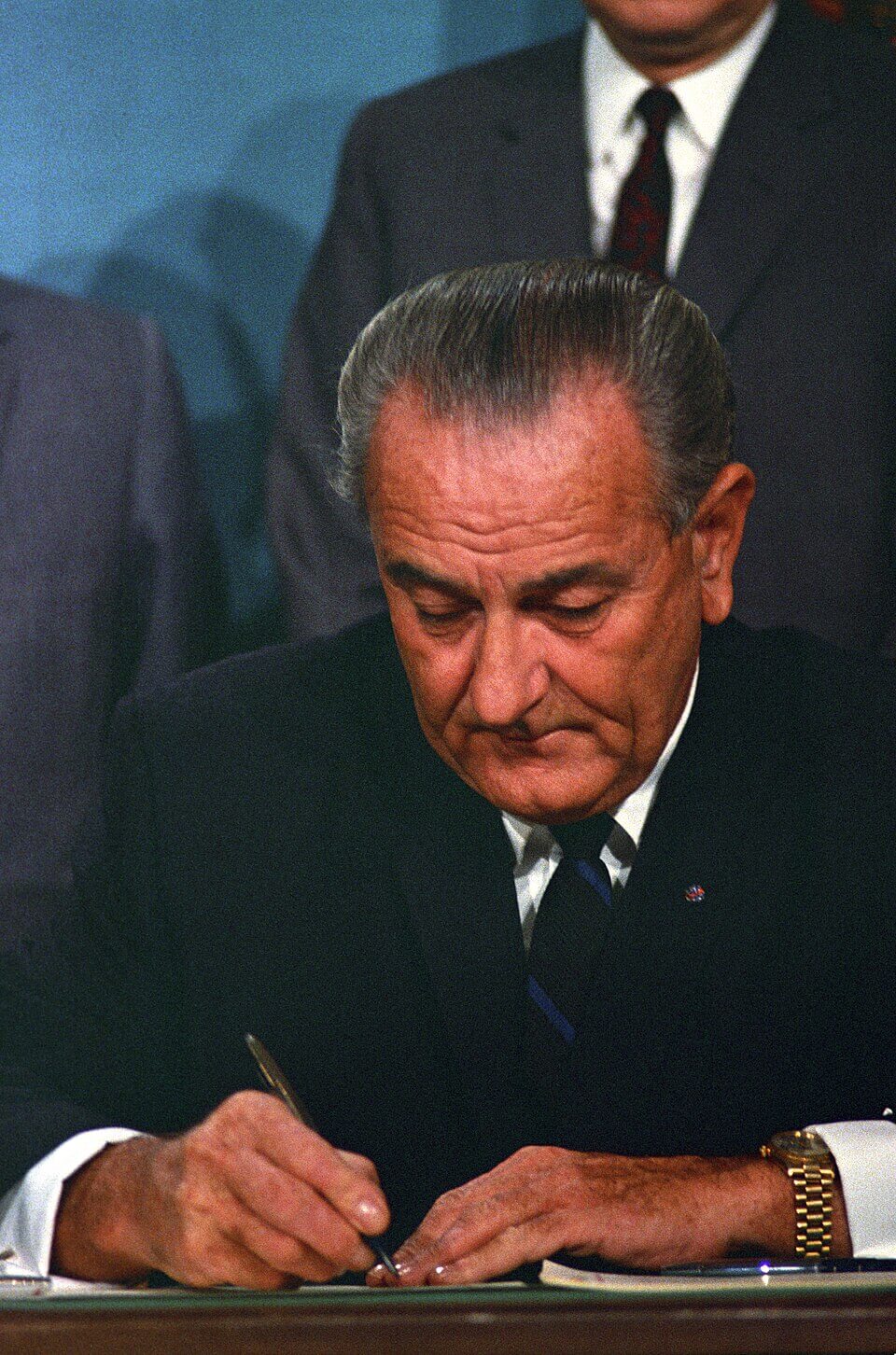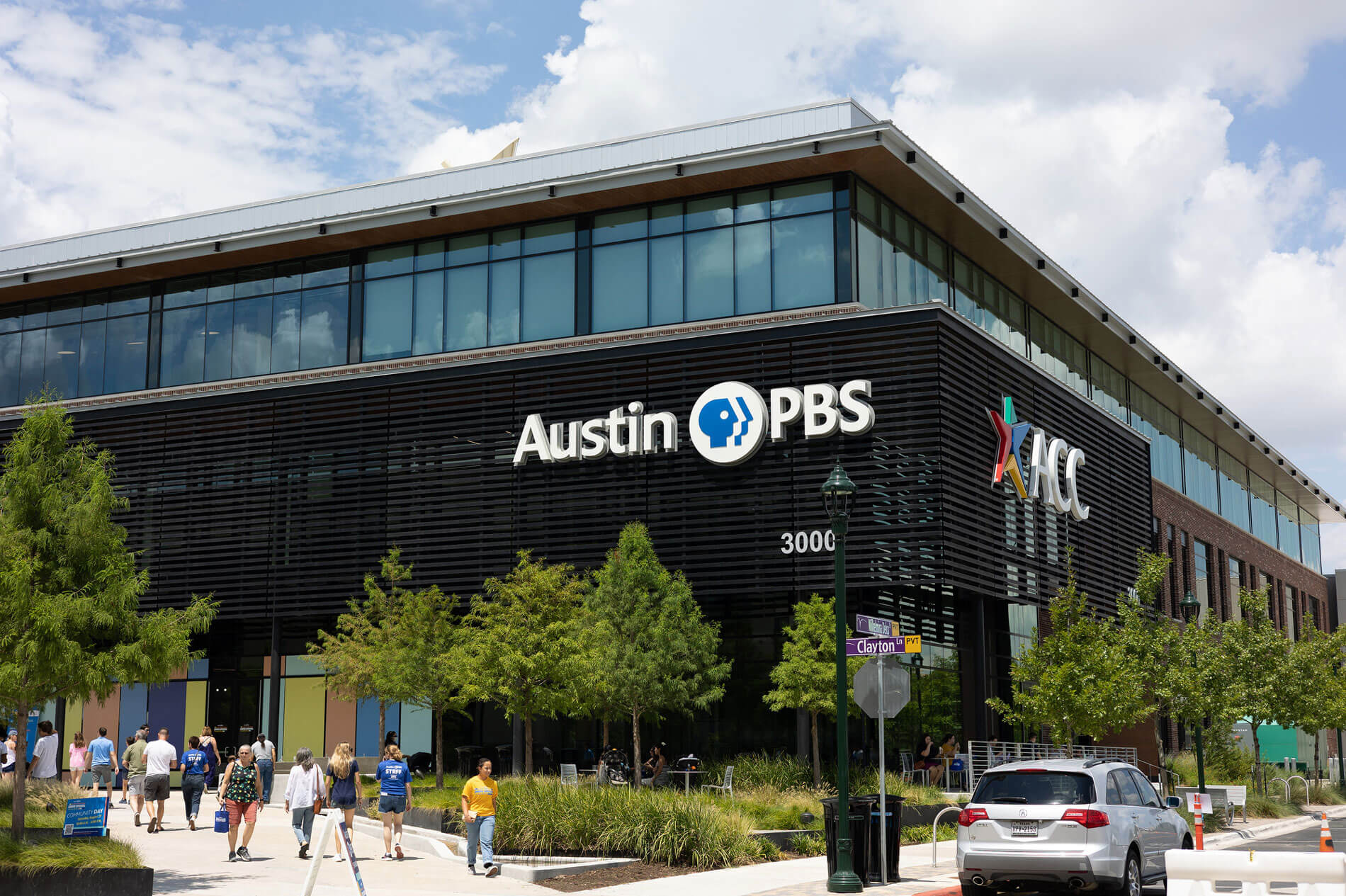The Public Broadcasting Service (PBS)’s first transmission from Boston was in 1970—three years after the Corporation for Public Broadcasting was created under President Lyndon Johnson with the passage of the Public Broadcasting Act of 1967. Since then, Julia Child’s The French Chef has become a classic, and PBS has produced countless programs that have shaped an immeasurable amount of dinner table conversations.
A good number of these programs focus on architecture and urban history. (I would know: Just after moving to New York City in my early twenties from Boston, I spent 18 hours watching New York: A Documentary Film by Ric Burns and James Sanders to get the lay of the land.) And who can deny the thrill of the hunt for furniture, art, and curios that has fueled the calming power of Antiques Roadshow for almost 30 years? Let’s not forget This Old House.
Last week, enacting the wishes of President Trump, the Senate and the House of Representatives voted to “claw back” $9 billion in funding already approved by Congress. Most of the sum was for foreign aid, but $1.1 billion earmarked for the Corporation for Public Broadcasting, which directs money to PBS and National Public Radio (NPR), was also pulled. This move fully defunds government support for these media outlets, an act conservative politicians have fought for since Ronald Reagan’s presidency.
Now, PBS will have to contend with a 15 percent funding cut, and 2 percent for NPR. The latter number might seem minuscule, but a 2011 NPR report found that about 18 percent of its over-1,000 member stations may go off the air without federal dollars, and 30 percent of NPR listeners will lose access to vital services like weather updates and local news announcements if these stations close, per reporting in the New York Times.
“The decision to defund PBS will impact the entire system, but most of all those smaller, rural stations that people rely on for emergency alerts, homeland security information, continuing education, and children’s programming,” documentary filmmaker Ken Burns told AN. “Sometimes public media is the only local news there is, reporting on school board and town council meetings. To hold this beautiful system together, we will continue to make the case that funding is essential, especially in places where it is far more difficult to secure other support.”
Architecture on Public TV
At times, this “beautiful system” focused on architecture, urban history, and design. Pride of Place (1984–85), for instance, was a classic PBS series hosted by Robert A. M. Stern that toured the audience through American architecture. (Stern declined to comment for this story.) After his first PBS film about the Brooklyn Bridge in 1981, Ken Burns later produced Frank Lloyd Wright (1998) and East Lake Meadows (2020); the latter is about a former public housing community in Atlanta, by Sarah Burns and David McMahon. Both Frank Lloyd Wright and Brooklyn Bridge feature interviews with Pulitzer Prize–winning critic Paul Goldberger.
Before his show was canceled in 2017 due to allegations of sexual harassment, Charlie Rose’s long-running interview program, which was syndicated on PBS, included dozens of segments with architects and about architecture.
In a rough order of first appearance, Rose’s guests included—pause for a deep breath—Paul Goldberger, Maya Lin, Charles Gwathmey, Terence Riley, Rem Koolhaas, Philip Johnson, Frank Israel, Robert A. M. Stern, Charles Jencks, Richard Meier, Michael Graves, Denise Scott Brown, Robert Venturi, Rafael Viñoly, Ada Louise Huxtable, Frank Gehry, Peter Eisenman, David Chipperfield, David Rockwell, Michael Kimmelman, William McDonough, Zaha Hadid, Robert Wilson, Richard Rogers, Robert Caro, Bernard Tschumi, Christian de Portzamparc, Morris Lapidus, Samuel Mockbee, James Sanders, Daniel Libeskind, Nathaniel Kahn, Bruce Mau, Ettore Sottsass, Santiago Calatrava, David Childs, Nicolai Ouroussoff, Hal Foster, Steven Holl, Herbert Muschamp, Yoshio Taniguchi, Renzo Piano, Annabelle Selldorf, Jean Nouvel, Moshe Safdie, Michael Arad, Vishaan Chakrabarti, James Turrell, Shigeru Ban, Tom Pritzker, Yves Behar, Bjarke Ingels, David Adjaye, and Norman Foster, among others. (Exhale.)
Subjects included a Wright retrospective, a 1994 piece about ballpark architecture with architect Janet Marie Smith (recently featured in AN), the future of the art museum, MoMA’s expansion with Taniguchi and former MoMA director Glenn Lowry, “architecture as communication” with Venturi and Scott Brown, segments on developing designs for Ground Zero, the High Line, Grand Central Station, and more.

At a moment when downtowns were being hollowed out and suburbs were exploding, Sesame Street introduced viewers to the joy of urban life. In a 1975 Sesame Street episode, New York architect Julie Edelman gave an interview from her drafting table. In 2001, a muppet version of I. M. Pei (named “I. M. Pig”) appeared on Sesame Street. There are also many other learning resources for K–12 education about architecture produced by PBS. The list could go on and on. And so many architects, historians, planners, conservationists, and citizens likely have been influenced by this programming and rely on this coverage.
“It’s beyond tragic,” Ric Burns, Ken’s younger brother, told AN. “If you’re someone at a television station like WGBH or WNET, these are dark times. I’ve talked to close mentors and colleagues in public television that have been doing this work for 40 years. I’ve seen hardened lawyers with thousand-yard-stares,” he said. “It’s hard to say what the outcome will be, but I do think public television will survive, albeit in an altered form.”
“The Central Park of the American Mind”
Since the Public Broadcasting Act of 1967 was passed, Republicans have targeted NPR and PBS, just as Tories in the U.K. have attacked the BBC (although a recent opinion poll shows public confidence in the BBC is in good shape, despite ongoing turbulence at its London headquarters). The Fairness Doctrine, passed in 1949 to ensure unbiased news coverage, was eliminated under President Reagan in 1987, giving rise to today’s “hyperpolarized media” environment, where discourse happens in solipsistic, panoptic echo chambers.
Goldberger, who has had a longstanding relationship with PBS, has spent his “whole life trying to deal with the question of the relationship between architecture and public discourse,” he said. Goldberger is also perturbed about PBS’s defunding. “When I was a kid, you know, there were things like Life and Time, magazines that everyone read, and television networks that everybody saw,” Goldberger lamented earlier this week. “Now, everything is so fragmented. There is nothing that communicates to everyone anymore.”
The successful campaign against U.S. public programming was launched in March 2025 with a Congressional hearing, Anti-American Airwaves: Holding the Heads of NPR and PBS Accountable, steered by Representative Marjorie Taylor Greene of Georgia. Part of the argument is that now we have the internet and social media, so we no longer need public media on TV. (In her district, “farmers listen to podcasts and internet-based news while they drive their tractors,” Taylor Greene said in her opening statement.) Hampering these resources stands to deprive the general public of a platform where American architecture and cities are regularly celebrated on screens and speakers around the country.
Goldberger sees flaws in Greene’s logic. In an age where podcasters and social media sites, with admittedly questionable fact checking policies, compete with legacy news sources, and video essays reign supreme over long form journalism, divesting from PBS is counterintuitive, he says. “Kids today are more visual than literary. They tend to not read as much, and are more image-driven than previous generations,” Goldberger affirmed. “That being said, what better thing than PBS is there for leaning into this kind of visual learning? It makes no sense on any level.”

James Sanders, an architect and filmmaker, and Ric Burns are now finalizing two new episodes for their New York series which will explore critical moments in the city’s history like Superstorm Sandy. Their program won’t be directly impacted by Congress’s changes, however both have deep concerns about what these cuts entail for the country’s future. Public media options provide certain advantages that for-profit media companies and streaming services simply cannot.
“The market, so to speak, does a great job, but it doesn’t do a perfect job,” Sanders told AN. “The idea of having this supplementary means of creating projects that would not necessarily be feasible in a strictly commercial context is terribly important. It has enabled us to do large-scale, in-depth, multifaceted explorations about cities, in our case New York City. This sort of biography of a city would not be possible without the instrument of public television.”
Empathy and Apathy
For Ric Burns, public television is more than entertainment: It’s a public good on a par with civic parks, nature reserves, and waters. “Public television is the Central Park of the American mind, at least that’s been my analogy for decades,” Burns said. “It’s a space for thinking, reflecting, and feeling at a different pace.” Building on the analogy, Burns suggests resources like PBS and NPR are central aspects of a healthy democracy.
“It’s a place where you can withdraw, but not run away from, the world. And then you can come back to the world, and look around with a new vantage point,” Burns added. “I don’t want to sound like Mr. Rogers, but the word ‘kin’ is at the heart of the word ‘kind.’ If we are trying to understand the meaning, value, and purpose of the world where we live, empathy must be a central tenet to society, despite what Elon Musk would have us believe.”
And like bridges, this resource needs investing in, Burns said. Goldberger agreed with the notion.
For Goldberger, the cuts exemplify “our failure to invest in the future,” he said, “the same way we often fail to put money into building infrastructure. Public television is social infrastructure,” Goldberger noted. These conversations fit into broader debates Goldberger has seen play out across his career. “You can’t allow yourself to be assaulted by every minute of this country’s political life, because it would be too hard to function and get out of bed in the morning that way. But you can’t run away from it and live in denial either.”
“I wonder sometimes if it’s necessary to be more active right now,” Goldberger ruminated. “I have no illusion that criticism, no matter how good it is, can change where we are dramatically. It’s delusional to think writing a couple of brilliant things will change the world. But if you change a few minds, or enlighten a few minds, it makes a difference, especially in troubling situations. It’s important to keep saying the right things, always.”
→ Continue reading at The Architect's Newspaper
